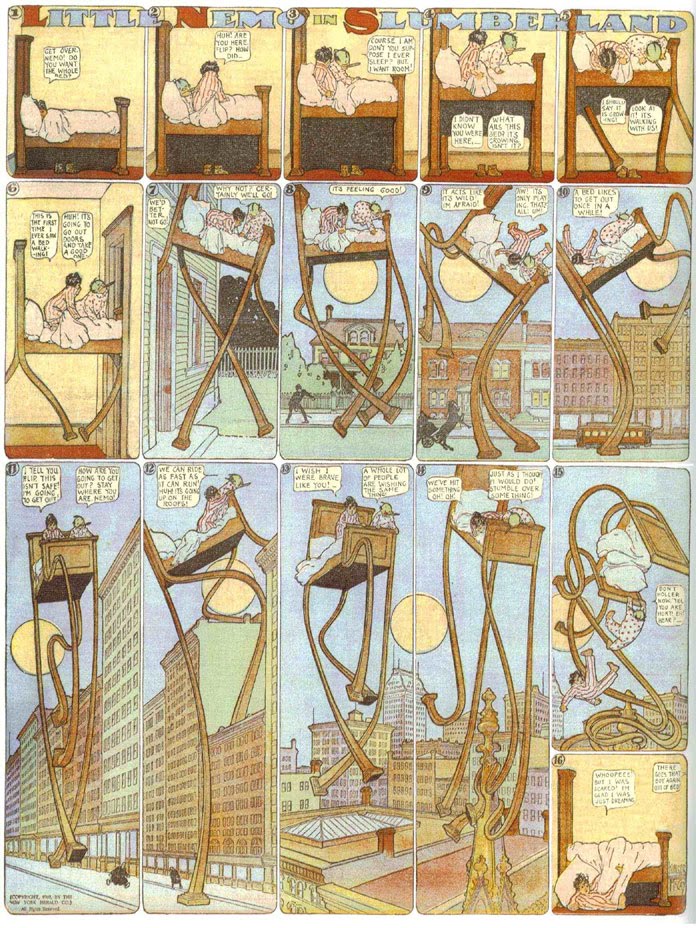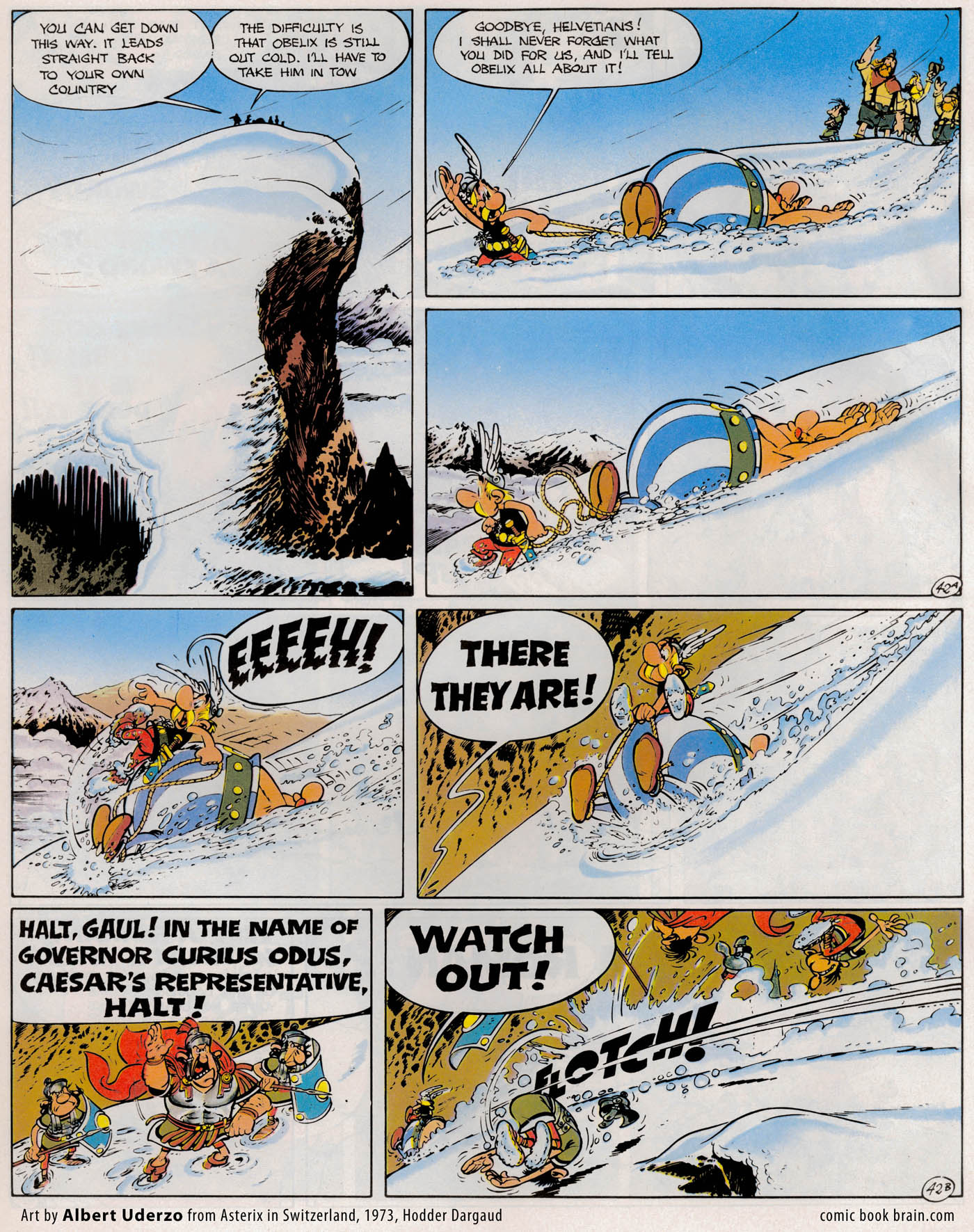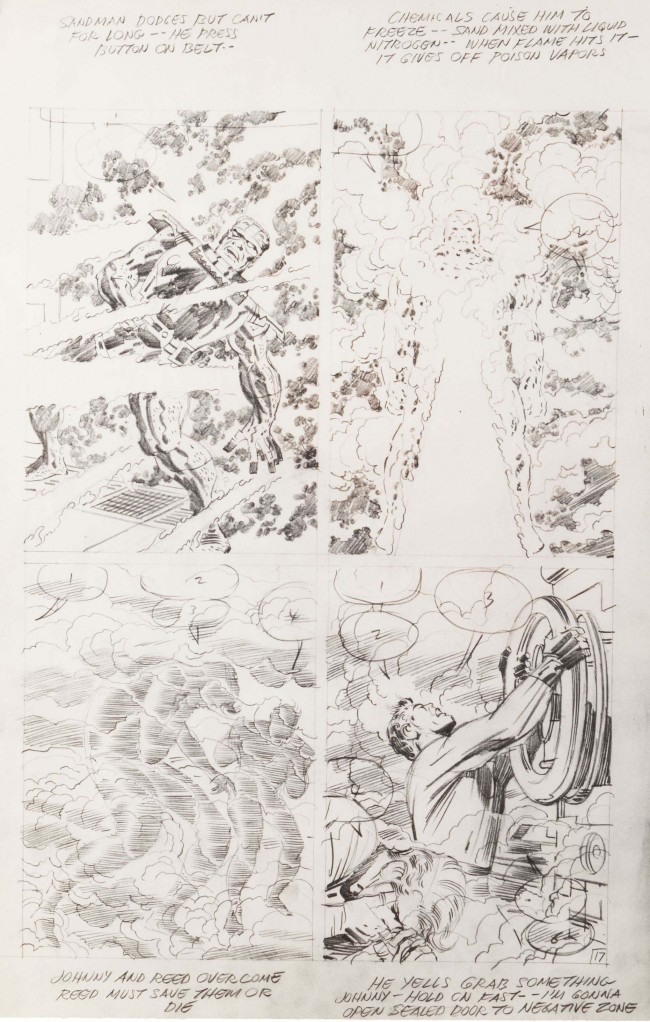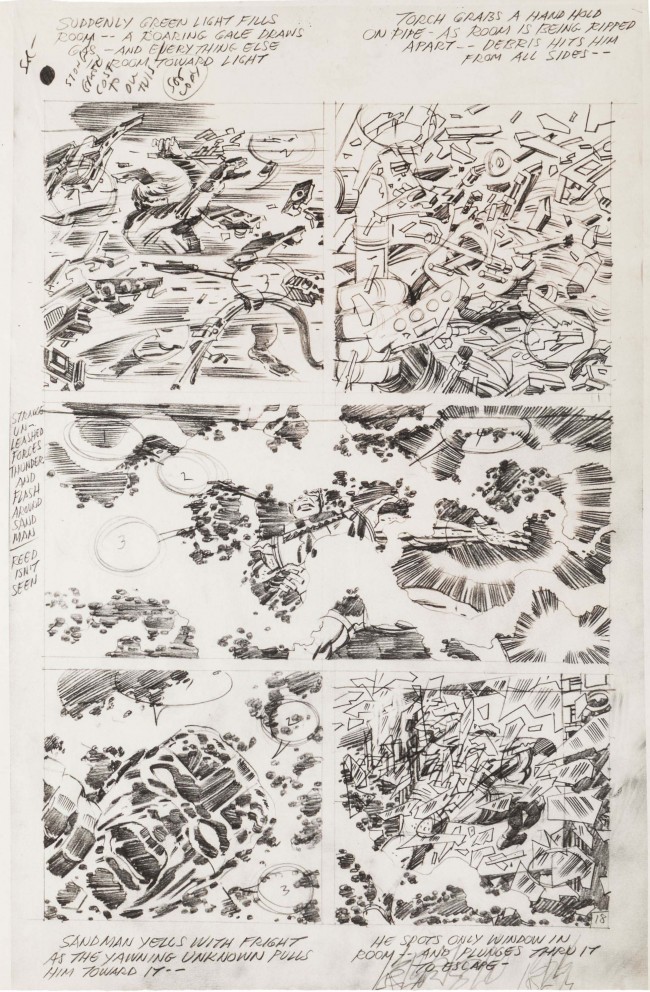The Comics Journal has an extensive piece up by Robert Steibel in which he looks at two pages of original art from Fantastic Four #61 and argues exhaustively, passionately, and convincingly that Jack Kirby was responsible for most of the ideas and plot. There’s a divisive and extended back and forth in comments as well.
Here’s the two pages.
Those images are a lot of fun to look at; as with any art by Kirby, there’s a lot of energy, and it kind of only improves things that you can’t really figure out what’s going on in the draft form. Andrei Molotiu has talked about how Kirby can be viewed as an abstract artist, and I think that makes sense especially in these original pages. You can even see Kirby almost working to turn his characters into abstraction, with all the smoke and mist and debris and Kirby krackle covering everything, turning individuals into forms. Reed opening that negative zone is almost a way to breach the wall between form and nothing, with Kirby and everyone else rooting for the gloriously meaningless nothing.
And everyone is rooting for the nothing over the narrative because the narrative is incredibly stupid. Steibel talks about how “wonderfully creative” it is to have the Sandman freezing and turning into chemicals etc. etc. — but come on. It’s not “wonderfully creative” unless you’re standards for wonderfully creative are amazingly lax. I mean, just to stick with work for children, is the writing and plotting wonderfully creative by the standards of this?

Or this?

Or, if you want to compare fight sequences, with this?
All of those have wit and grace; the action mischievously escalates (in Nemo and Asterix) or ping pongs elegantly back and forth (in the Princess Bride). There are beats and timing built into the development, like that lovely moment where Asterix freezes and looks at something off panel before the crazed descent begins. There are winking hidden easter eggs, as when the tiny horse bucks in time to the giant bed in the Nemo page. There’s a use of visual action and dialogue to create characterization all through the Princess Bride. In comparison,the Kirby pages are just ponderous blaring; people screaming about how they’re trying really hard and are going to do something spectacular, over and over. There’s a super battle and yelling and things flying around, but there’s not any particular wit or style or even through line to the narrative. There’s just fight, setback, solution to setback, more chaos. It’s puerile, and mostly unreadable, even for two pages, even when you’re just looking at notes and don’t have to drag yourself through all the speech bubbles.
And yet, people are angrily, violently arguing over decades about who wrote this. Steibel thinks he’s doing Jack Kirby some sort of favor by declaring that the credit for the writing should virtually all go to Kirby. He even lists all the story elements/ideas to show that most of them belonged to Kirby — inadvertently demonstrating that the narrative is basically just a series of stuff happening without any real coherence or guiding vision. And, yes, okay, Steibel convinced me — Kirby is responsible for this incredibly stupid story as well as for the bizarre and interesting art.
Maybe, possibly, the reason that the Marvel method worked, the reason that the artist could make the story and Lee could just bubble it in, the reason that there’s so much uncertainty about who did what, is because the attention to story-telling and narrative was, on everybody’s part, incredibly half-assed. The only interesting thing in those comics is Kirby’s drawing, and they are most interesting, I am convinced, when you see them as formal exercises rather than as narrative.The death match over whether Lee wrote the thing or Kirby wrote the thing — it’s like arguing over who’s responsible for composing a spam email. It just always amazes me that anyone can manage to make themselves care.


